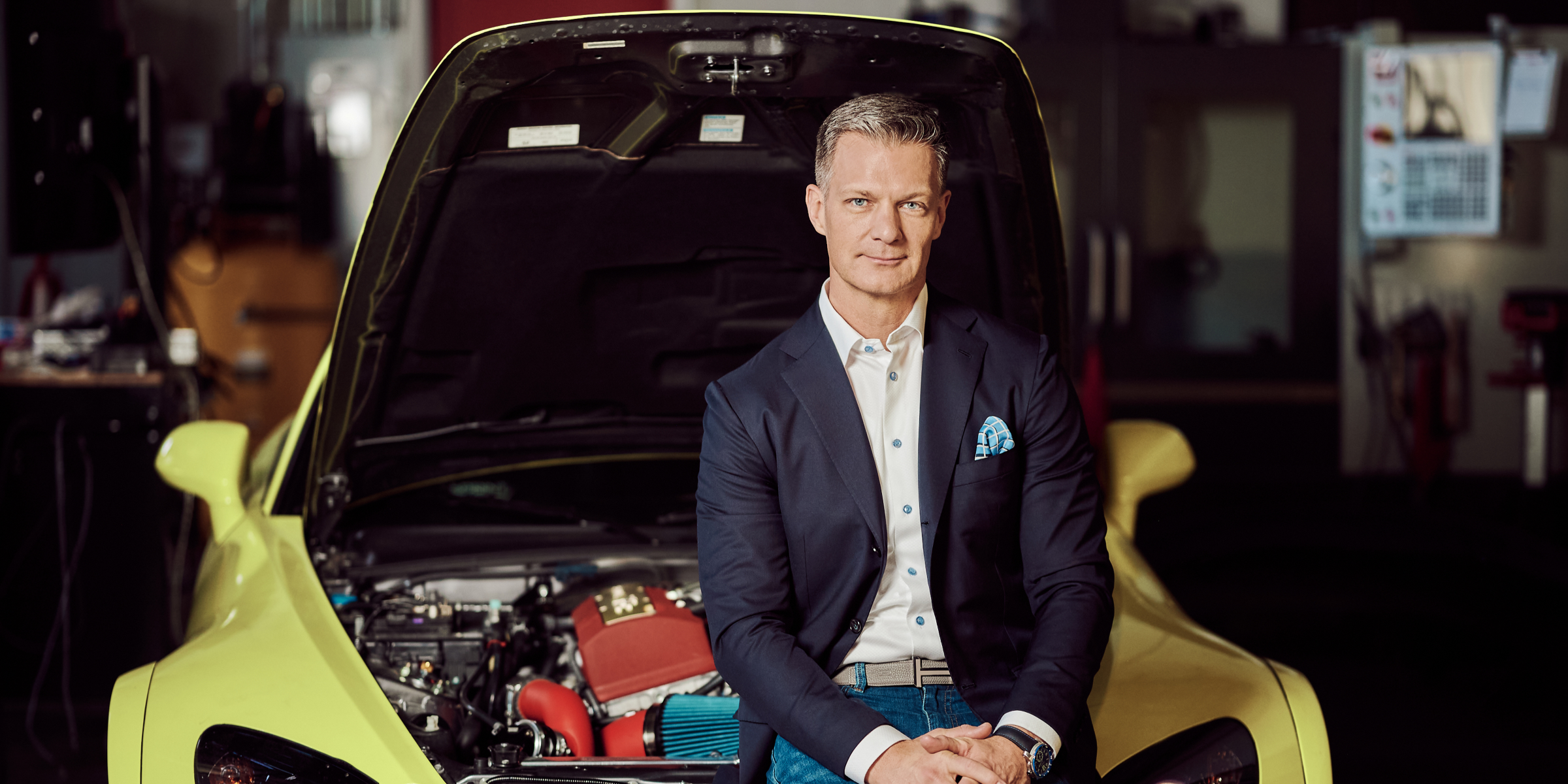ERP Today interviews Boomi CEO Steve Lucas, who shares all on being inspired by connecting the world and why AI transformation can only happen with your data house in order.
On one level, the Boomi proposition is an iPaaS offering connectors for SAP, Salesforce, Oracle NetSuite, AWS and hundreds more. Founded in 2000, the company today boasts over 20,000 customers, 800+ global partners and more than 300,000 endpoints.
From another perspective, Boomi’s offering is one where the Earth meets ERP. The connection between these two disparate elements will make sense as you read our interview with the company’s CEO, Steve Lucas. In the same vein, the art of “connecting” is the real story behind Boomi in 2024.
No ERP system is an island; users have to work with all manners of systems across a variety of instances. Variety is the spice of life, as they say, but users know how the landscape looks and feels: fragmented, for a better word.
Steve Lucas knows this, and acts on it with regards to the Boomi customer case. When explaining what drew him to Boomi, the chief exec explains to ERP Today that it’s all about connection.
“What deeply resonates with me is that people, companies, cultures even, they’re better when they’re connected. When they talk to each other, when they communicate, everything is just better. And there’s that universal truth that deeply resonated with me the moment I heard Boomi – it literally means ‘of the Earth’.”
“I have yet to meet a company where connecting things won’t make better outcomes,” Lucas continues. “And that’s just a deep, universal truth.”
Bringing this back down to Earth, Lucas says Boomi offers companies “any to any integration”, a phrase which recurs in our chat with the exec.
“In this world of connectivity, ‘one-to-one’ connectivity will break your back. It can’t be one to one. It can’t be one to many – it has to be any to any.”
The chief exec says this mission is what drew him to Boomi from his previous role as CEO for iCIMS, leaving the HCM venture at the end of 2022. Lucas’ resume includes VP duties in the late 1990s and much of the 2000s for Business Objects (later SAP Business Objects). He would eventually leave SAP from the post of president of its platform and analytics products, before starting his CEO phase with Marketo, the marketing automation subsidiary which would become an Adobe company.
His prior experience as a Salesforce SVP also plays well in the here and now, with Salesforce’s Mulesoft offering competing with Boomi. Also, he reveals that Salesforce is one of the systems that Boomi customers integrate with the most worldwide.
Looking back at his professional history, Boomi’s leader believes he has always been drawn to technologies which have a tangible impact, gravitating “towards things which are new, things which are innovative, things which make a difference.” One example he cites of customers “doing amazing things” with Boomi is Cochlear.
“It’s an amazing organization which gives hearing to people that never had it or lost it. The fact that Boomi can orchestrate every process in their organization […] and we can be part of that mission – I just love that.”
The CEO also runs the gamut from big to small when it comes to Boomi’s considerable footprint, as shown when he brings up one end user, a university student working on an app to see if their clothes are dry post-laundry wash.
“It’s Boomi that’s connected to the dryer, talking to the app. And there’s a company in the world right now that’s validating all of the trades on their stock exchange platform using Boomi technology to move all of that information and drive trade validation. That’s happening with Boomi right now, times 20,000-plus companies.”
For Lucas this shows the changing themes for CIOs today, with trends on Big Data and digital transformation all forming an on-ramp to “the world of connecting things”, going back to that deep universal truth he sincerely believes in.
CIOs and the integration challenge
They want this high end, ‘super car’ of ERP systems. But when it comes to the tires, let’s
get the absolute cheapest, used ones!
When it comes to CIOs, Lucas regards their role as the hardest in modern enterprise today. For ERP customers, integration is top of tray for CIOs looking for the benefits of AI, cloud transformation and better data handling. As the CEO reminds us, none of those things can happen perfectly without proper integration between systems. The problem is CIOs are expected to shed the legacy burden, whilst reducing costs at the same time. Of course, no self-respecting CIO would implement the cheapest ERP or CRM money can buy. But even in possession of the “Porsche or Ferrari of ERP”, as Lucas puts it, cost cutting poses another existential ERP problem.
“They want this high end, ‘super car’ of ERP systems. But when it comes to the tires, let’s get the absolute cheapest, used ones that I possibly can! And that’s generally the integration strategy. I’ll put bad gas in the engine, and I’ll get really bad tires. And then you’re surprised when you have deployment challenges, reliability challenges, cost overrun – the list goes on and on and on.”
The car analogy is a fitting one. When he’s not in the boardroom, Lucas can be found in his garage, tuning and customizing cars to his heart’s content.
“It’s a passion that’s run deep for a long, long time, and I’ve tricked my 24-year-old son into hanging out with his old man while working on cars!” Lucas laughs.
“I find beauty in every car I look at. When I look at a car, I don’t just see the exterior. I can’t help but think about the engine inside and the fuel going into it and the air moving through.”
Lucas sees cars as a series of trade-offs that see fit to making a vehicle both economical and reliable. But with his particular passion, the CEO wonders how he can make “the absolute best version” of a car, one as fast, as light and as durable as possible.
Naturally, Lucas thinks about companies the same way, wondering how to make them remarkably efficient with use of every drop of performance, while also keeping the reliability and durability of the operation.
“How do you take the horsepower from 200 to 500?” he asks. “There’s so much more capability there than what you’re presented with.”
ERP customers, he says, are faced with a hyper-fragmented integration landscape for which only the sturdiest, most maneuverable vehicle will suffice.
Leaning into the fragmented nature of today’s status quo, the CEO reminds us the average enterprise today has over 360 applications, proof to him that the fragmentation issue was further compounded in the move from on-prem to the cloud.
Speaking with CIOs, Lucas understands why so many data warehousing projects end in failure: mishandling of said data. The wrong systems are accessed, systems don’t “talk” to each other, and data proves to be too complex, too varied and too poorly integrated.
At risk are companies being able to keep on top of scale, reliability, compliance – and security.
“The darker side of having a fragmented integration model is that bad actors want to get at your data. Think about the risk you’re taking if you’re investing in a connector from a company that isn’t focused and obsessed on security 24/7. You’re betting your entire company on that one thing. It’s fraught with risk.”
The Boomi boss believes that as big vendors build competently for a one-to-one instance, customers are led down “the wrong path” into thinking their integration problems are resolved. As he sees it, if the enterprise application giants have truly solved the integration challenge, then why does so much of Boomi’s revenue come from integrating their systems?
Innovation beyond integration
The Boomi mission is clear to Lucas: becoming the number one integration and automation platform out there, and removing the digital fragmentation challenge for enterprises. But that’s just the first part, because then comes a new opportunity to differentiate on technology and achieve outcomes powered by artificial intelligence.
Perhaps unsurprisingly, the AI question looms large in our conversation with Boomi’s chief. However complex the situation today is with all things cloud and security, we’re only at the tip of the iceberg when it comes to artificial intelligence within the enterprise space.
Lucas uses another car-related analogy when discussing AI, talking about the invention of the automobile and the subsequent road accidents in its wake.
“Because there weren’t stop signs and stop lights, and we had to invent those things. And with AI, we’ve kind of invented a new vehicle, and we’ve gotta build on-ramps and off-ramps and roads and stop signs and stop lights, and I want Boomi to be part of that.”
This is likely to be reassuring news to conscientious CIOs, and indeed it’s hard to miss the messaging on ethics and safeguards in AI from the likes of Salesforce. But Lucas also realizes the most basic thing most CIOs want today: to take AI from proof of concept to scale. In other words, less talk and more walk, something backed up by concrete business scenarios.
The key to this is finetuning what users can do with their large language models, and – again – integration proves vital. An integration platform can take information from hundreds of systems inside an organization, ensuring that this data is the right type of format and model to go into vector databases and LLMs, feeding and then leveraging them for the end user’s benefit.
“So while you’re completing the active integration and automation, we can create a system where you can just ask it, ‘Hey, can you connect my Salesforce to SAP for me?’ But the question you’ll be able to ask it in the near future is, ‘Why didn’t those three invoices run?’”
Lucas believes the “Holy Grail” around business that will present itself soon around large and even small language models is users having a conversation with AI about their business processes.
“I just want to ask my business a question about itself. With business intelligence and analytics, warehouses and semantic layers, people have tried for 30 years to try and get this right. But it’s always the same thing. It’s trying to teach humans to think like a computer instead of teaching the computer to think like a human.”
In other words, a simple question and answer scenario, instead of structured, complicated and pointed queries with only one outcome. Lucas returns to this thinking when discussing the three A’s of Boomi’s strategy for 2024: Automation, APIs and AI.
“AI will play a massive role in process intelligence,” he explains with infectious enthusiasm. “If you could ask your system, ‘How does my invoicing process work?’ And boom, boom! It brings to the table hundreds of millions of processes that we’ve built into a model that can tell you exactly how your process works.”
On automation, Lucas argues that CIOs need to choose the right platform for automating processes as they solve their fragmentation woes, citing “millions” of de-identified design patterns in the Boomi platform that help, he explains, with reduction in time to work of 90 percent.
The final piece in perfecting process intelligence is a rich, open API based on a modern framework and a language that an organization’s developers can “speak”.
“Boomi’s API management technology is incredibly well-regarded to apply APIs to,” the exec adds.
Implementation before revolution
AI and LLMs will change the world
Speaking with Lucas, it’s clear his and Boomi’s vision for the company is that of integration and automation being innovation. The two concepts are interchangeable, with one unable to exist without another.
In solving fragmentation, CIOs are freed up to solve more pressing challenges in the enterprise tech space: security, talent development, AI safeguarding, and the move to cloud.
As a half billion-dollar enterprise, Boomi is in a good position to achieve its aim of becoming the singular integration and automation platform of choice.
It’s also clear Lucas is thinking beyond cloud to the next stage of GenAI in the ERP space. That AI and digital transformation is impossible without proper integration needs is a message that Boomi’s customer base of manufacturing, financial services, healthcare, retail and high tech should likely take on board.
Across his seasoned career, it’s worth noting Lucas has seen the advent of the cloud and the smartphone, and he equates the rise of AI to such era-defining moments in tech, saying it will compel organizations to move to change – along with the world around them.
“AI and these large language models will change the world, in ways that we can’t yet imagine. It is so exciting to me, to know that this world that we live in will be so profoundly different.”
To be part of that world, Lucas affirms, CEOs can’t just have the fastest car out there – they also need to ensure it has a decent set of tires.
“If not, you’re gonna have a blowout. It’s gonna be on the second lap and you’re gonna get left by your competition.”
With Steve Lucas in the driving seat, it’s very unlikely Boomi will blow out on the ERP racetrack.





